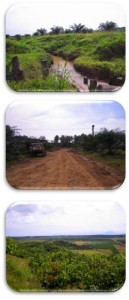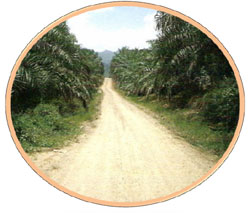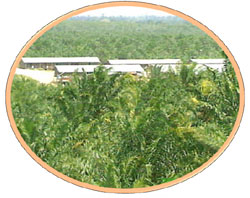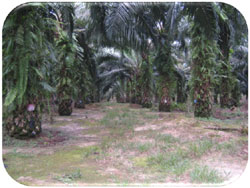 |
Palm Oil Mill at Pulau Sebatik, Tawau, Sabah
(Teck Guan Development Sdn. Bhd.)
Envsolve Sdn. Bhd. was entrusted by Teck Guan Development Sdn. Bhd. to prepare an Environmental Impact Statement for the mill proposal which has been much anticipated by planters in Pulau Sebatik. The proposed mill is within Bergosong Estate on the land owned by the Proponent at the island which is about fifteen minutes away by speedboat from Tawau. The proposed Project involves the construction and operation of a palm oil mill (POM) covering a total area of 58.80 acres. The mill has a processing capacity of 60 tonnes/hr of the Fresh Fruit Bunches (FFB). The proposed POM operation will opt for conventional oil palm processing system for CPO extraction and land irrigation for its final treated effluent disposal. The palm oil mill effluent (POME) principal treatment system will consist of removal of non emulsified oil, removal of organic pollutants by using Anaerobic Expanded Granulated Sludge Blanket (AnaEG) and Aerobic Fixed Film Reactor (BioAX) and finally removal of non biodegradable organic pollutants by using dissolved air floatation system. This technology is expected to reduce BOD concentration to less than 20mg/l. |
 |
New Kalabakan Palm Oil Mill at Kalabakan, Tawau, Sabah
(Kilang Sawit Kalabakan Sdn. Bhd.)
Envsolve Sdn. Bhd. was appointed by Kilang Sawit Kalabakan Sdn. Bhd. to prepare an Environmental Impact Statement for the proposed mill which is located at Selimpopon Estate, covering a total area of 10 acres. The mill is based on conventional oil palm processing system of CPO extraction with processing capacity of 45 tonnes/hr of the Fresh Fruit Bunches (FFB) and opt for land irrigation for its final treated effluent disposal. The palm oil mill effluent (POME) principal treatment system is based on SEATEKNIK System. The POME is treated by aerobic process where massive air is introduced to remove large solids and fibrous material while simultaneously breaking down soluble organic particles of POME into very fine particle size. The light weight particles will then be digested by harmless bacteria. The POME will then undergo screening and clarification prior entering the duckweed pond which acts as natural membrane filter. The final BOD concentration is expected to be less than 20mg/l. |
 |
Palm Oil Mill at Ladang Mamahat, Sandakan, Sabah
(Syarikat Sabaco Sdn. Bhd.)
The proposed mill has a processing capacity of 20 tonnes/hr of Fresh Fruit and occupied 12 hectares of land within the Syarikat Sabaco Estate. The mills CPO extraction process is a combination of continuous sterilization and conventional oil palm processing system. As for final treated effluent, the mill opted for land irrigation. The palm oil mill effluent (POME) principal treatment system will consist of series of conventional ponding system prior to entering a tertiary treatment plant. Tertiary treatment plant includes a clarifier, polishing units and sand beds as filters. This technology is expected to reduce BOD concentration to less than 20mg/l is. Syarikat Sabaco Sdn. Bhd had engaged Envsolve Sdn. Bhd. to prepare an Environmental Impact Statement for the proposed mill, which, by the start of 2009 had obtained its license to operate. |
 |
Rex Palm Oil Mill at Brantian, Tawau, Sabah
(Konsep Muktamad Sdn. Bhd.)
Konsep Muktamad Sdn. Bhd., one of Teck Guan Group subsidiaries had assigned Envsolve Sdn. Bhd. to prepare an Environmental Impact Statement for the proposed mill. The mill would have a processing capacity of 60 tonnes/hr of Fresh Fruit Bunches (FFB) and is proposed to be developed at Brantian Estate, covering a total area of 58 acres. The mill operation is based on conventional oil palm processing system of CPO extraction will opt for land irrigation for its final treated effluent disposal. The palm oil mill effluent (POME) principal treatment system will consist of removal of non emulsified oil, removal of organic pollutants by using Anaerobic Expanded Granulated Sludge Blanket (AnaEG) and Aerobic Fixed Film Reactor (BioAX) and finally removal of non biodegradable organic pollutants by using dissolved air floatation system. This technology is expected to reduce BOD concentration to less than 20mg/l. |



